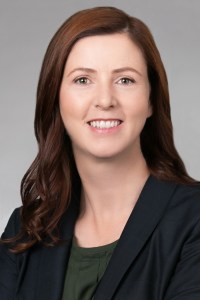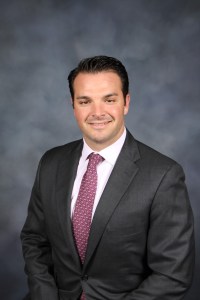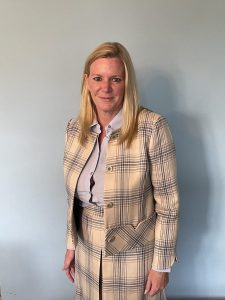Hurricane Ian’s Impact on CRE Insurance Rates
Experts weigh in on the storm’s effect on costs and ways to mitigate those repercussions.
Hurricane Ian, hitting Florida on September 28, has gone down as one of the most destructive storms in U.S. history. High winds, storm surges and expansive flooding have already caused billions in residential and commercial real estate damages. With rising interest rates and labor and material shortages, recovery of the devastation will likely be both slow moving and expensive.
The costs of wind damage on residential and commercial properties is estimated to be some $22 billion to $32 billion, while the storm surges have destroyed another $6 billion to $15 billion in real estate assets, according to a report by CoreLogic. Damages of this magnitude can push more insurance companies into insolvency, as many have already done. ABCNews reported that since January 2020 at least a dozen Florida insurance companies have gone out of business, with another 30 experiencing instability. The state’s insurance landscape was already in a crisis before Hurricane Ian as premiums were significantly higher than the national average.
Ian’s effect on Florida CRE rising premiums

Mark Hubbard, Managing Director, Gallagher USA Property and Gallagher London Property. Image courtesy of Gallagher
Commercial insurance rates have already been on the rise due to inflation, increased building costs and supply chain issues. Catastrophic losses often deplete reserves of insurance carriers, making commercial insurance more reactionary than other insurance types. Prior to Hurricane Ian, the inflationary impact on replacement cost values led to an increase in premiums, according to Mark Hubbard, managing director of Gallagher USA Property and Gallagher London Property.
“With this catastrophic loss impact to insurance and reinsurance carriers, carriers will be firmer in their requirement for increases and pressure on the magnitude of their prior thoughts,” Hubbard told Commercial Property Executive. “Those clients impacted by losses arising from ‘Ian’ will see a greater impact and pricing will be further dependent upon the quantum impacting multiple layers, ratios between premium and losses plus the cost and availability of treaty reinsurance at Jan. 1st, 2023.”

Martha Bane, Executive Vice President & Managing Director of Property Practice, Gallagher. Image courtesy of Gallagher
“Ian will have an impact on almost all property insurers as this catastrophic loss impacts both insurers and reinsurers. The impact of inflation on replacement costs will play a big part in the size of this loss and we may begin to see carriers reduce the capacity provided,” Martha Bane, executive vice president & managing director of Property Practice at Gallagher, told CPE.
Different property types will feel the impact of replacement and development costs in varying manners. Florida property types of different categories will also see different increases in their insurance. Several Gallagher experts commented that hospitality, personal lines and multifamily communities will likely be hit the hardest.
READ ALSO: Building Resilience for a Changing Climate

Janet Ruiz, Director of Strategic Communication, Insurance Information Institute. Image courtesy of Insurance Information Institute
Janet Ruiz, Director of Strategic Communication at Insurance Information Institute, explained how potential insurance raises will depend on the businesses’ physical structures as well as their contents. “Retail and restaurants are probably the most vulnerable, but maybe not the most expensive. A business that has manufacturing equipment could be much more expensive to replace. I think it is going to vary by business line. A lot of companies, especially in Florida, do plan for catastrophe, and the more expensive it would be to replace their equipment the more seriously they take it already,” said Ruiz.
National impacts
Nationwide insurance premiums have the potential to be affected by the aftermath of Hurricane Ian, depending on the asset’s location, business type and performance. Tier 1 exposed properties across the U.S. are expected to see insurance rate rises. However, the overall direction of the market may not alter too much.

James Rozzi, Area Executive Vice President of Property Practice with Risk Placement Services, Wholesale Division, Gallagher. Image courtesy of Gallagher
“Inflationary issues are everywhere, so clients should expect premiums to increase as a consequence of their replacement cost valuation increases,” said Hubbard.
“Treaty Cat reinsurance is ordinarily purchased for all catastrophic perils. Assuming this doesn’t change at Jan. 1st, anticipate that there will be a nationwide impact in high designated catastrophic areas. Areas outside of these would not be expected to be impacted in quite the same manner. However, insurance rating of individual risks by each insurance carrier is very subjective.”
James Rozzi, area executive vice president of property practice with Risk Placement Services at Gallagher’s wholesale division, noted that the threshold for an event to move the markets still seems to be measured at $100 billion in insured losses, as was seen with hurricanes Harvey, Irma and Maria. While Ian is a massive catastrophic event and will rise rates in Florida, it may not nationwide.
Mitigating the repercussions
Florida was already seeing challenges in terms of securing capacity, high construction costs and supply chain issues. Hurricane Ian has the potential to exacerbate these market issues while making insurance difficult to find and maintain.

James Stuart, Chief Sales Officer & Practice Leader, HUB International. Image courtesy of HUB International
James Stuart, the corporate chief sales officer & Practice Leader for HUB International’s North America real estate specialty, along with Amy Michelle Windhauser, executive vice president, Property Practice Leader – Central Region with HUB International, explain their insights on the effects of added insurance premiums: “At first, it will be challenging to find insurance capacity since 12 percent of property reinsurance capacity was lost before Hurricane Ian and the Monte Carlo Ren-de-Vous, the reinsurance and insurance sectors gathering to discuss and debate critical issues in the industry. Those insureds with named wind and flood insurance already in force, will find that in Florida, they will be either non-renewed or see a significant premium increase with restricted terms and conditions. Alternative program structures may need to be explored by clients, such as parametric, structured risk, and bi-furcated (splitting of exposures).”

Amy Michelle Windhauser, executive vice president, Property Practice Leader – Central Region with HUB International. Image courtesy of HUB International
Despite concerns about the challenges Florida faces in the wake of Hurricane Ian and a challenging market, there are ways owners can mitigate premium increases. While this can be a difficult feat, there are strategies that Stuart and Windhauser advise on.
“In general, insureds need to show underwriters why their assets are best in class with evidence such as hurricane and water mitigation programs and checklists. Well-written business continuity plans will help demonstrate proactive risk management to the insurance marketplace. Insureds should do everything they can to mitigate their current open losses. Any loss history presented with the underwriting submission should include a narrative discussing the loss, mitigating strategies used to contain loss amounts, and any corrective action taken on a post-loss basis.”

Alexandra Glickman, Senior Managing Director & Practice Leader, Gallagher. Image courtesy of Gallagher
Similarly, Rozzi told CPE: “Providing underwriters with as much information about your assets and measures taken to protect them. Higher deductibles and self-insured retention may be a consideration.”
Alexandra Glickman, senior managing director & Practice Leader for Gallagher’s real estate practice, said that insurers will not be turning a blind eye to incomplete underwriting or under-reported values anymore.
“Understanding the risks that pertain to their assets, i.e. flood elevations, age of roofs, general conditions of the asset is the first step in controlling the premiums. Insurers may look for increased minimum deductibles for larger Tier 1 exposed portfolios, and they will certainly focus more positively on the better protected assets,” said Glickman as advice to property owners.








You must be logged in to post a comment.